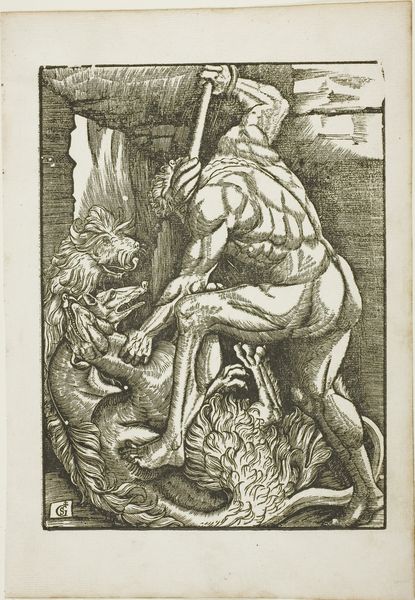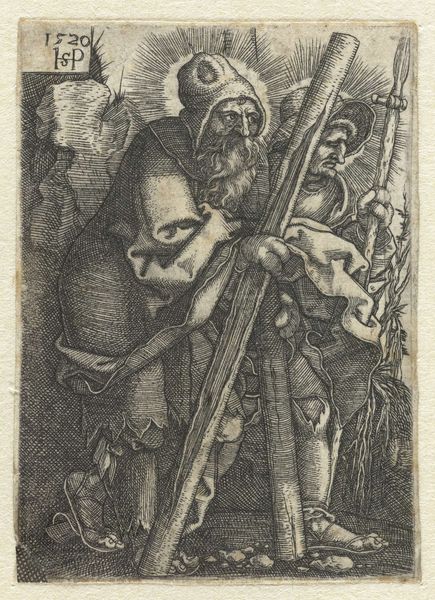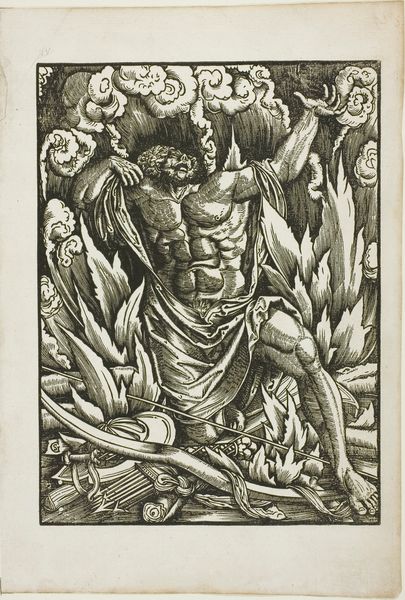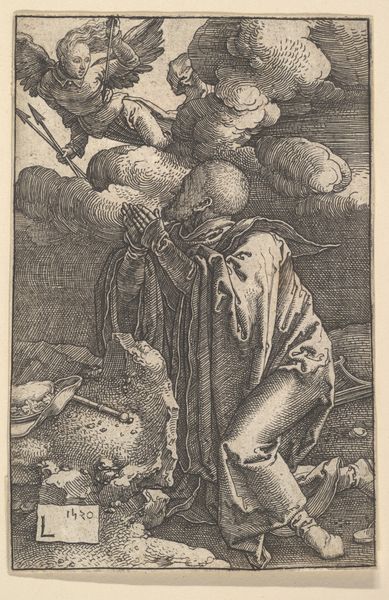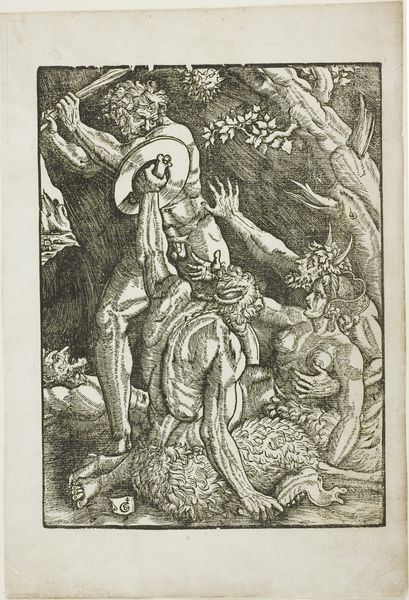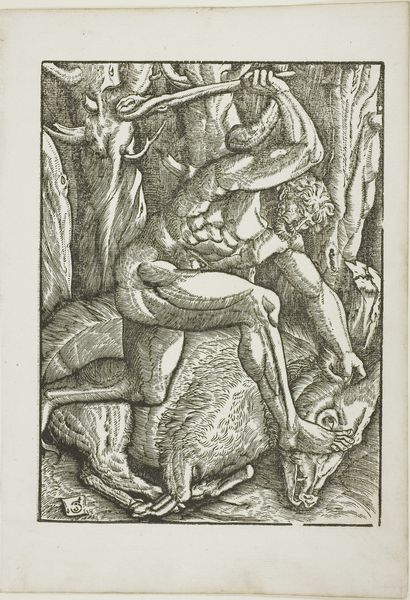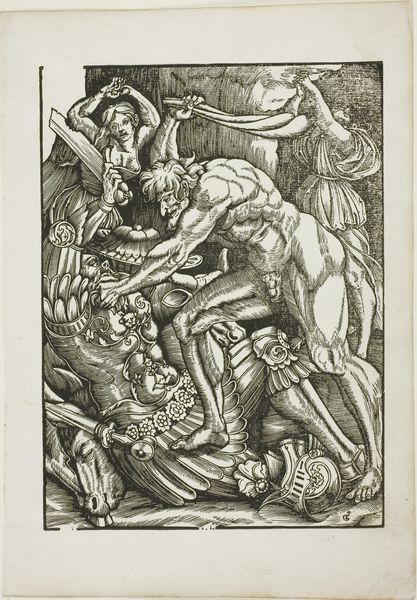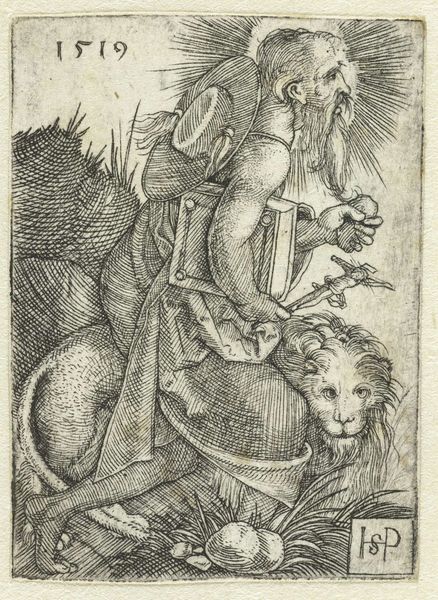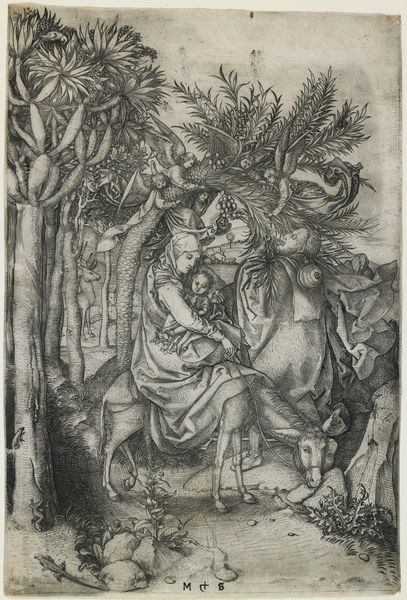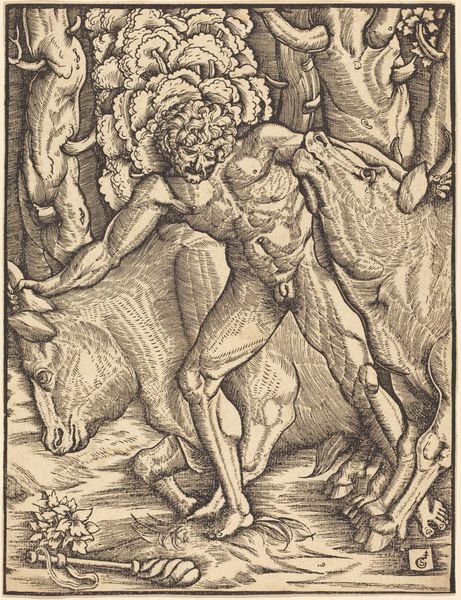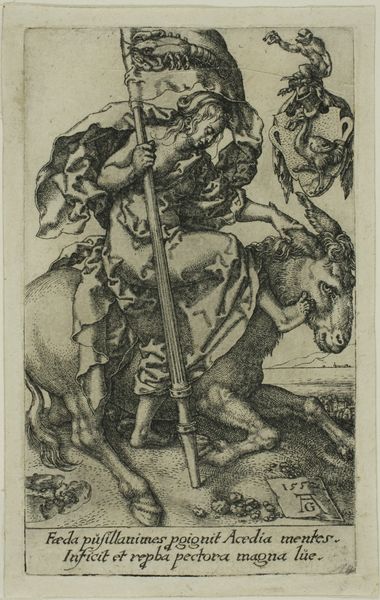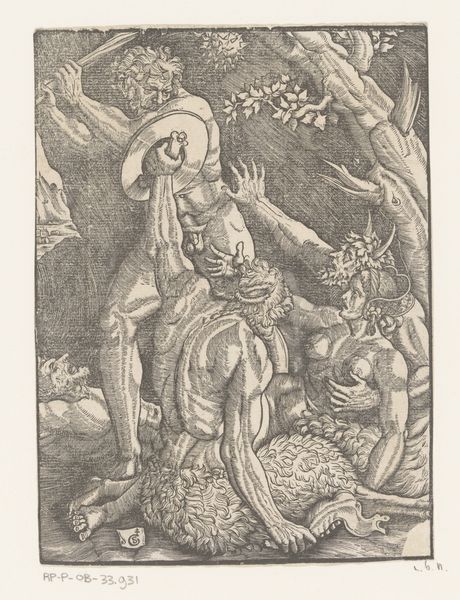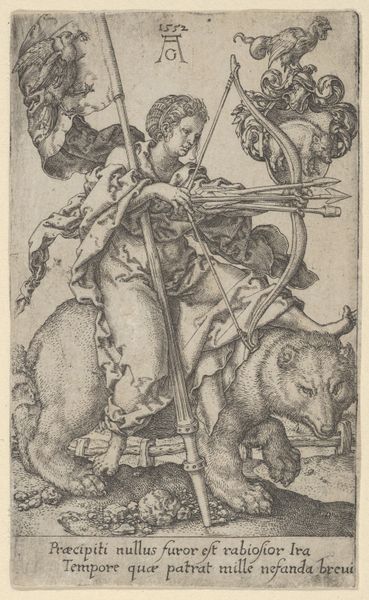
drawing, print, paper, engraving
#
drawing
#
allegory
# print
#
figuration
#
paper
#
line
#
history-painting
#
northern-renaissance
#
engraving
Dimensions: 64 × 37 mm (image/plate/sheet)
Copyright: Public Domain
Editor: Here we have Albrecht Altdorfer’s “Dido Killing Herself,” an engraving dating back to the 1520s or 30s. There's a real sense of drama in this piece. What do you see in this work that resonates with our modern understanding of history and culture? Curator: This engraving gives us an opportunity to question the traditional narratives surrounding female agency and self-destruction. Dido, in Virgil’s "Aeneid", is often portrayed as a victim of love, driven to suicide by Aeneas’s abandonment. But let's consider this from a different perspective: what if we examine Dido's suicide not as a purely emotional response but as an act of resistance? Editor: Resistance? How so? Curator: In choosing death, Dido reclaims power in a patriarchal society. She actively denies Aeneas and Rome the chance to control her narrative. Altdorfer, through his artistry, might be subtly highlighting this. Notice her posture, her direct gaze—do you see a victim or someone asserting a final act of control? Editor: I hadn't considered that angle before. The composition, with the swirling lines around her, now feels less like despair and more like a force field of her own making. Curator: Exactly. And it is crucial to remember that suicide, while tragic, can be interpreted within different cultural and historical contexts. We have to analyze the patriarchal structures and power dynamics at play that confined Dido and other women throughout history. We need to ask: what choices were truly available to her? What would a feminist reading of this engraving tell us about early modern perspectives on female autonomy? Editor: This has definitely broadened my view. I was focusing on the surface story of heartbreak, but now I see the potential for deeper discussions about female agency and resistance. Curator: That's the power of art, isn't it? To provoke questions and challenge our assumptions about history, gender, and power.
Comments
No comments
Be the first to comment and join the conversation on the ultimate creative platform.
